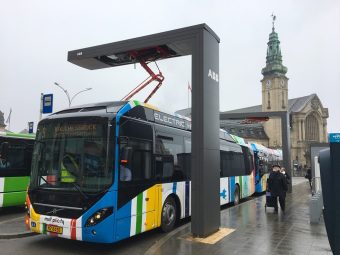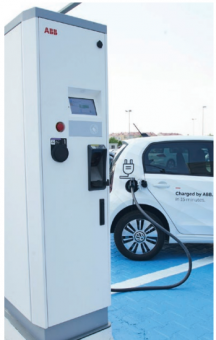
Electric buses and cars that are increasingly seen on the streets of European cities will be an everyday occurrence on our roads in the near future. of chargers. Not only because of the environmental awareness of the citizens but also because of the fact that it will simply be a European standard. Many countries have already advanced far in the strategy of developing electromobility and in every way, motivate citizens to switch to this type of transport as much as possible. Of course, while developing the network of chargers in parallel, which is the most important precondition for driving your electric car, when you have already bought it, you can drive without interruption, without thinking about whether your battery will run out halfway and you have nowhere to charge it. Our country also has a strategy for the development of electromobility, which is why in March the Serbian government passed a decree on subsidised purchase of electric or hybrid vehicles, based on which, for example, a subsidy of 5,000 euros is approved for the purchase of a fully electric vehicle with up to nine seats.
This is a significant help if we take into account that the prices of the average city car with electric drive range from 10,000 to 30,000 euros. However, the main obstacle for citizens to take advantage of this benefit is the insufficiently developed infrastructure network that would provide a sufficient number of chargers. Therefore, it should not be surprising that the Ministry of the Interior has so far registered a bit more than 200 electric passenger vehicles in Serbia. You can charge your electric car, via an ordinary single-phase socket, and at home, in the garage. But it will take seven, eight hours, and your range is limited until you return home. At several locations along Corridor 10, as well as at several places in Belgrade, there are electric chargers installed, but their number is currently insufficient. In essence, chargers as chargers are the smallest problem, especially since ABB has been operating in our country for 28 years, and is among other things, a world leader in the production of electric chargers, with the largest installed base of fast-charging stations for electric vehicles worldwide, and a partner of Formula E in international organisations for electric motorsports. They also offer 600-kilowatt chargers, which can charge the battery of an electric vehicle in just a few minutes. However, for our conditions, it is still science fiction. In the realm of reality, two fast chargers, Terra 53 and Terra 54, which ABB installed at the location of the Porsche SCG company in Belgrade and in the parking lot in front of its company headquarters, make the suffering of electric vehicles on our roads much easier.
In focus:

The power of these so-called fast chargers is 50 kilowatts, which means that you can charge the battery on it in 15 minutes to half an hour, or in one hour if the battery is completely empty. Forty-three kilowatt AC chargers are also available at these stations, where charging takes several hours, as well as DC chargers with direct voltage. So-called ultra-fast chargers, with a capacity of 75 to 600 kilowatts, which significantly shorten the charging speed, require much more energy than is currently available at our charging stations. Drivers of electric cars in our country are certainly already aware that ABB’s fast chargers are located in front of the Hyundai representative office in New Belgrade, as well as in the Navak Center in Subotiste, which is 40 km away from Belgrade. In Navak, the fast charger will be used to test new models of electric cars. It is very important that the number of fast chargers grows, because the owners in many loca- tions, where there is no long delay, expect the battery of the electric car to be recharged in a short time. In contrast, slow chargers are mostly installed in shopping malls, because it is calculated that users will spend more time in those places. As many as 16 slow AC chargers have been installed in Ada Mall, and while electric cars are being charged in the park- ing lot of this shopping centre, their owners can make purchases, complete tasks that they didn’t manage during the workweek or spend time with their family, easily and without haste. Their electric cars will be ready to go. The expansion of ABB’s network of fast chargers is also underway, as the implementation of new projects is expected to begin. Drivers will soon have at their disposal 3 high-power chargers, 175 kW, as well as 3 50 kW chargers, on the Novi Sad- Belgrade highway, at the Pan-Ledi charging station.
“It is certainly necessary to build infrastructure, provide energy, and of course, regulate all that with regulations so that we would have a developed network of chargers in the near future. Of all this, it is easiest to build infrastructure, but energy supply will be a problem when the use of electric vehicles becomes more widespread. That is why we should go in the direction of developing new types of energy, because, for example, chargers can also be powered by solar energy if a roof with solar panels is placed on them. This would give us the point of the whole story – that electric cars do not pollute the environment and do not consume the energy produced in thermal power plants that pollute the environment, but that the energy is obtained from wind generators or solar panels. In Serbia, that has been recognised, and work is already underway on the installation of wind generators “, says Dejan Desic, head of the Infrastructure and Transport segment at ABB.
This article was published in the new issue of the Energy portal Magazine SUSTAINABLE TRANSPORT, september-november, 2020.



